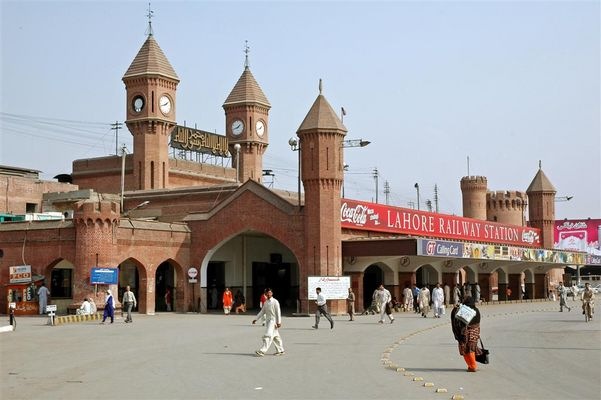
Pakistan Railways Network PR Locale Pakistan Dates of operation 1861–present ( 5 ft 6 in) Length 7,791 kilometres (4,841 mi) (route) 11,881 kilometres (7,383 mi) (track) Pakistan Railways ( PR) (: پاکستان ریلویز) is the national, state-owned railway company of. Founded in 1861 and headquartered in, it owns 7,400 miles (11,881 km) of track across Pakistan from to and operates and passenger service. Pakistan Railways was also known as the from 1947 to 1974. In 2014 the launched Pakistan Railways Vision 2025, which seeks to increase the company's share of the transportation sector from four to 20 percent with the ₨886.68 billion (US$8.4 billion) rail upgrade. The plan includes new, development and improvement of current rail infrastructure, an increase in average train speed, improved on-time performance and expansion of passenger service. Arturia Oberheim Sem V Mac Os X S more.

The first phase of the project was completed in 2017, and the second phase is scheduled for completion by 2021. Pakistan Railways is an active member of the. Main article: In 1855, during the, several railway companies began laying track and operating in present-day Pakistan. The country's rail system was originally a patchwork of local rail lines operated by small, private companies, including the,, and. In 1870, the four companies combined to form the. Several other rail lines were soon built, including the,,,, and. These six companies merged with the Scinde, Punjab & Delhi Railway to form the in 1880.
Between 1880 and 1947, the North Western State Railway expanded throughout and. In 1947, when Pakistan achieved from, most of the North Western State Railway infrastructure was in Pakistani territory and was renamed the. In, the portion of the in Pakistani territory was renamed the. During the early years of independence, Pakistan's rail system was reorganised and some of the reorganisation was controversial. The country adopted 8,122 kilometres (5,047 mi) of the North Western State Railway; 6,880 kilometres (4,280 mi) was 1,676 mm ( 5 ft 6 in), 506 kilometres (314 mi) was, and 736 kilometres (457 mi) was ( 2 ft 6 in). Rail use increased in 1948, and the network became profitable.
Feb 13, 2012 My FB ID: www.facebook.com/s.orangzeb Price: PKR 1500/- for more information Contact: 03 place your bids to claim exclusive rights for this. China-Pakistan Railway. Gave impetus to proceed with the plan of building China-Pakistan rail. Pakistan oil cooperation and join in this economic game. Pakistan railways reduces rail fares. The Pakistan Railways on Thursday announced a substantive. Carriage service' as this could be a real game.
From 1950 to 1955 the Mashriq-Maghreb Express operated from in to in, using Indian tracks and rolling stock for a 1986-km (1245-mile) route between Attari and Benapole. In 1954, a branch line was extended from the to and.
Two years later, the - metre- line was to 1,676 mm ( 5 ft 6 in). In 1974, Pakistan Western Railways was renamed Pakistan Railways. The - section of the was built from 1969 to 1973, providing an alternate route from to northern Pakistan. In February 2006, the 126-kilometre (78 mi) was converted to 1,676 mm ( 5 ft 6 in). On 8 January 2016, the double-rail project was completed and all narrow-gauge tracks were converted to 1,676 mm ( 5 ft 6 in) or dismantled. Pakistan Railways has been criticized for its deteriorating service and declining number of passengers and trains.
The railway was the predominant mode of transportation in Pakistan until 1965. At its peak between 1955 and 1960, PR handled 73 percent of the country's freight traffic (compared to less than four percent in 2015).
During the 1970s, Pakistan Railways also had the largest passenger-transport share. Unfortunately, its role as a catalyst for economic development has received a setback due to significant under-investment by successive governments who preferred investment in road infrastructure at the cost of railways. Declining passenger numbers and financial losses in the late 1980s and early 1990s prompted the closure of many branch lines and small stations. The 1990s saw steep cuts in and mismanagement in the company. Due to falling passenger numbers, government subsidies are necessary to keep the railways financially viable.